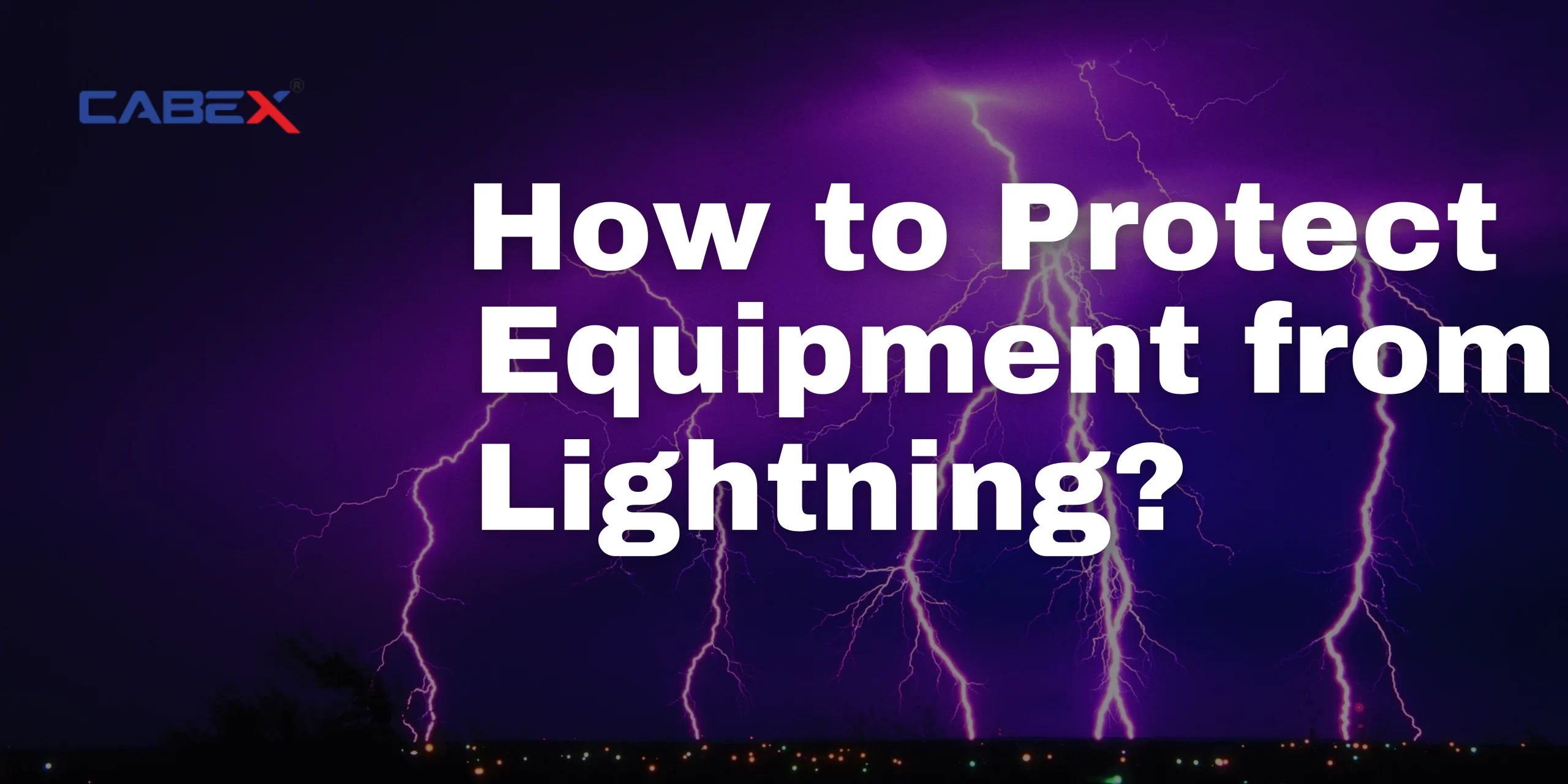Introduction
Lightning strikes pose a significant threat to equipment, causing damage and downtime that can be both costly and disruptive. To safeguard your valuable assets from the destructive power of lightning, it’s crucial to implement effective lightning protection measures. This blog will guide you on How to Protect Equipment from Lightning?, ensuring their safety and uninterrupted operation. We will explore various strategies, techniques, and lightning protection accessories that can help mitigate the risks associated with lightning strikes.
Understanding the Dangers of Lightning Strikes
Before diving into lightning protection methods, it’s important to comprehend the potential hazards associated with lightning strikes. Lightning carries immense electrical energy, which can result in catastrophic consequences for your equipment. The intense power surges induced by lightning can damage sensitive electronics, disrupt power supply, cause data loss, and even lead to fire hazards. Recognizing the risks will emphasize the need for effective protection measures.
Lightning Protection Systems
One of the most reliable methods to safeguard equipment from lightning is by installing a comprehensive lightning protection system (LPS). An LPS typically consists of several key components, including:
Lightning Rods (Air Terminals)
Lightning rods, also known as air terminals, are strategically placed metal rods mounted on the highest points of a structure. These rods act as the initial point of contact for lightning strikes, providing a controlled path for the electrical current to follow. By effectively capturing and conducting the lightning safely into the ground, lightning rods prevent direct strikes on the equipment.
Surge Protection Devices (SPDs)
Surge protection devices play a critical role in lightning protection systems. These devices are installed at various points within the electrical system to suppress and divert transient voltage surges caused by lightning. SPDs limit the voltage that reaches the equipment, safeguarding it against damage.
Grounding Systems
Proper grounding is essential for effective lightning protection. Grounding systems provide a low-resistance path for lightning-induced currents to safely dissipate into the ground. By establishing a reliable grounding network, the potential for equipment damage due to ground potential rise is significantly reduced.
Lightning Protection Accessories
In addition to the core components of a lightning protection system, several accessories can further enhance equipment safety. These lightning protection accessories complement the primary protection measures and provide an additional layer of defense against lightning strikes. Some commonly used accessories include:
Surge Protective Devices (SPDs) for Data and Communication Lines
Equipment connected to data and communication lines, such as computers, network equipment, and telephone systems, requires specialized surge protective devices. These SPDs are designed to suppress transient voltage surges that can enter through these lines, preventing damage to sensitive electronic components.
Lightning Arrester
A lightning arrester, or surge arrester, is a device installed at the entry point of power supply lines to protect against lightning-induced voltage surges. It diverts the excessive current caused by a lightning strike away from the equipment, preventing potential damage.
Bonding and Earthing Clamps
Bonding and earthing clamps are used to establish effective grounding connections between various conductive elements in the lightning protection system. These clamps ensure proper bonding of metal structures and create a unified grounding network to minimize the risk of equipment damage.
Lightning Risk Assessment
Before implementing lightning protection measures, conducting a thorough lightning risk assessment is essential. This assessment involves evaluating the vulnerability of your equipment, assessing the likelihood of lightning strikes, and identifying potential points of entry for lightning-induced surges. A professional lightning protection specialist can assist in performing a comprehensive risk assessment to develop a customized protection plan.
Conclusion
How to Protect Equipment from Lightning? Protecting your equipment from the devastating effects of lightning strikes is crucial for ensuring their safety, longevity, and uninterrupted operation. By understanding the dangers associated with lightning and implementing a robust lightning protection system, including appropriate lightning protection accessories, you can significantly reduce the risk of equipment damage. Remember to conduct a lightning risk assessment and consult with experts to tailor your lightning protection measures to the specific needs of your equipment and facility. Don’t wait for a lightning disaster to strike—act now to safeguard your valuable assets.
How to Calculate the Actual Size of a Cable Gland?
Best Metal Cable Gland Manufacturer in UAE





